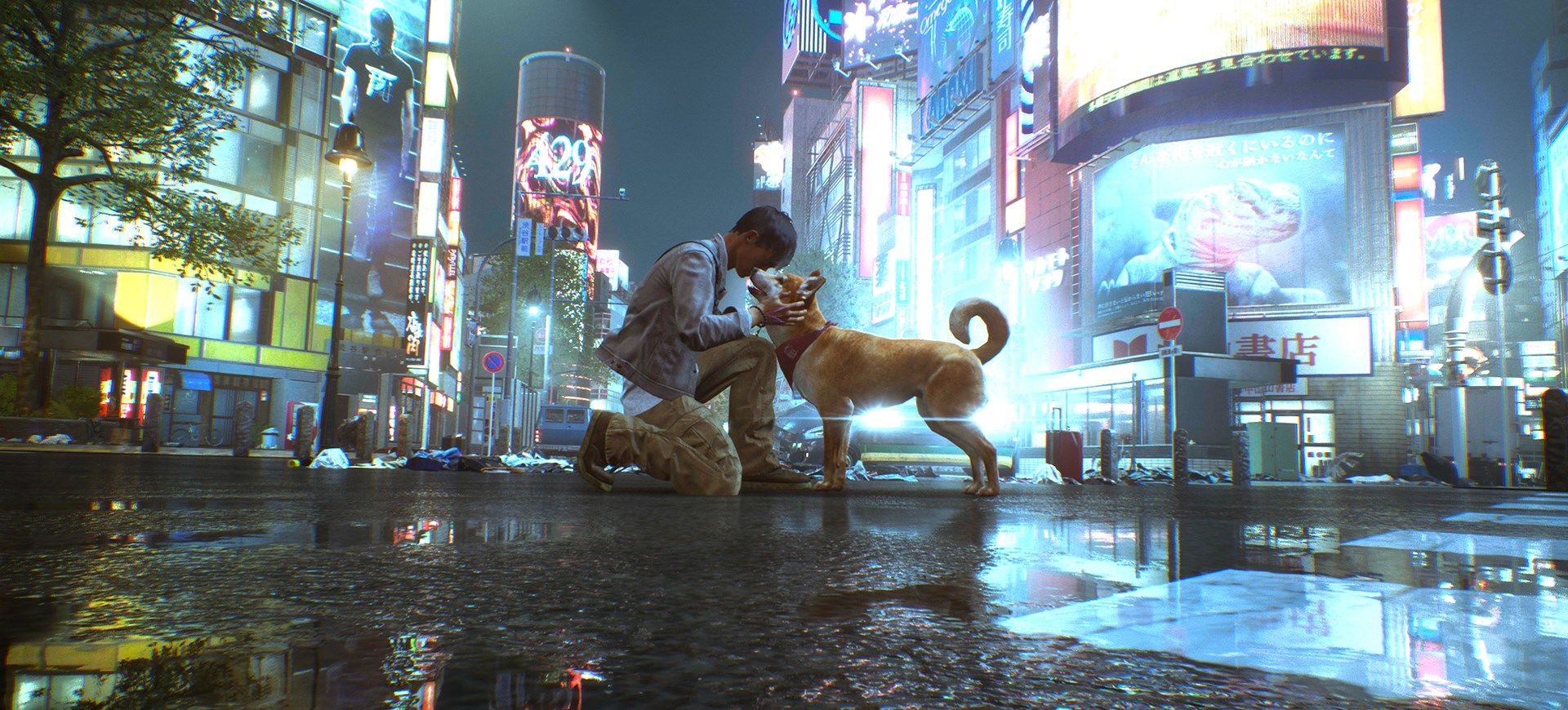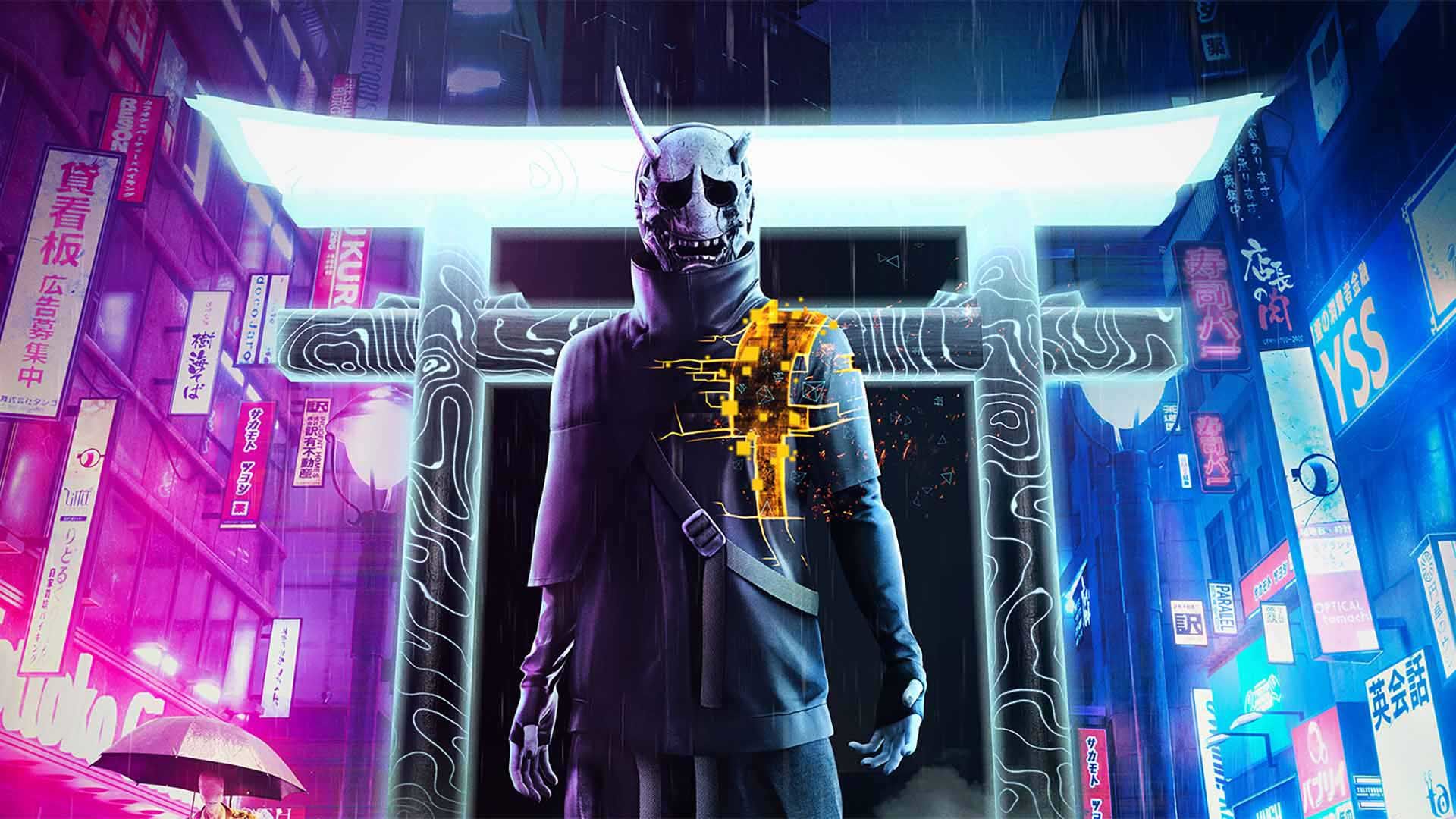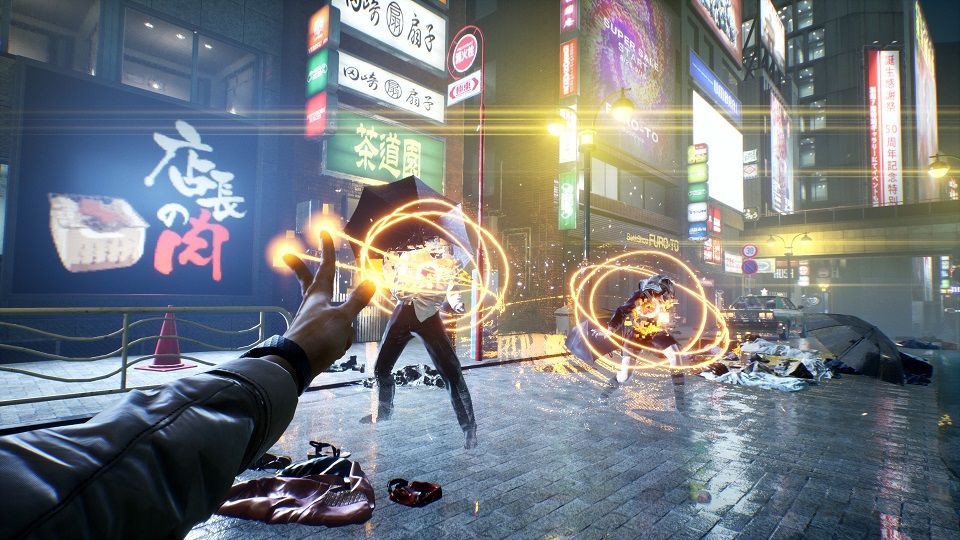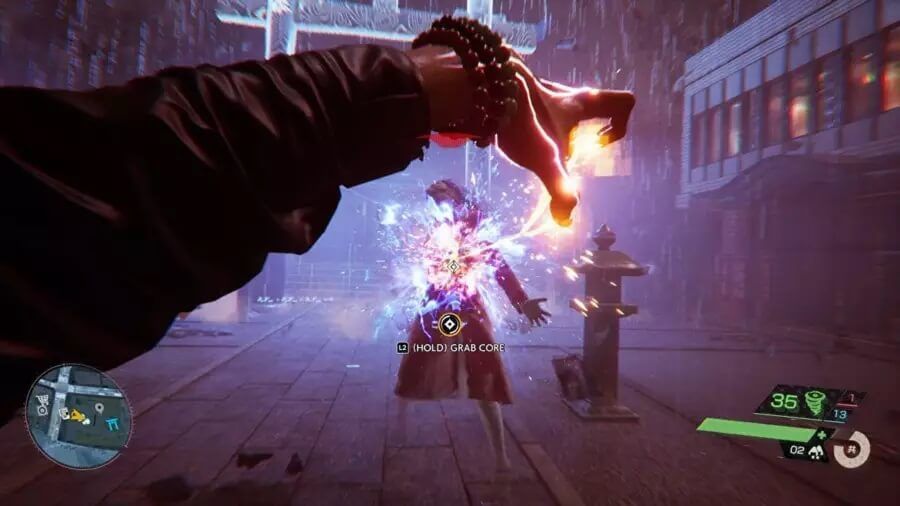Ghostwire: Tokyo System Requirements [2025] – Can Your PC Handle It?
In our preliminary review of Ghostwire Tokyo, developed by Tango Gameworks, we touch on the general features and dynamics of the game, which we entered into a special presentation.
Ghostwire Tokyo is a production that has been in development for a long time and attracts attention with its supernatural atmosphere. We can say that it had given indications that it would have a mysterious story from the first announcement trailer. Although Bethesda, which distributes the game, was purchased by Microsoft, due to previous agreements, we will see this game exclusively on the console side, just like the Deathloop game, on the Playstation 5. Behind the game, which will also be on the PC platform, is Tango Gameworks, which we have previously seen with The Evil Within games. Shinji Mikami, who is the founder of the studio and signed these games, is not very active in this project, but he is one of the executive producers. The directorship of Ghostwire Tokyo has been entrusted to Kenji Kimura.
A 10-minute gameplay video was released after a long break for the game, which will be released on March 25. However, we previously attended a special presentation that included the dynamics shown in this video and lasted about 40 minutes. This presentation, organized by Bethesda, included much more detailed information, as well as a long and pure gameplay video. Now, let's move on to what we saw about the game, considering the information at hand and the dynamics we saw in this presentation.

Ghostwire Tokyo preview
First of all, the long presentation shown to us was taken from the first hours of the game. Although key moments in terms of the story were not shown, I can say that our character's questions and behaviors actually revealed that he had just fallen into this turmoil.
In the game, we control a character named Akito. Paranormal events are happening in Tokyo for reasons we don't yet know, and we witness spirits roaming around in this city where people have disappeared. A Tokyo atmosphere has been created that is as if it were in another dimension but also carries the traces of that destruction. I have to say upfront that Ghostwire Tokyo looks really nice in terms of atmosphere with abandoned streets, overturned vehicles and spirits running around. In fact, I can say that this atmosphere is my favorite aspect of the game at this stage.

Akito also has a character that we can call a mentor. I say owner because our character has a spirit named KK on his right arm that helps him. As you can see in the videos, the reason why the character's right arm and eye are different is because of KK. Akito, who is introduced as a ghost hunter, probably gains his special powers this way by uniting with this spirit. KK gives us information about both the missions and the supernatural events we encounter. Our character's main goal is to learn what is behind these events, but most importantly, to save his family. To do this, he needs to take down the character that we often see in the promotional videos and is referred to as Mastermind in the video.
Of course, to achieve this goal, we need to defeat the ghosts and spirits that run around Tokyo and get in our way. For this, our character has various abilities. The hand movements the character makes to cast spells were inspired by Kuji-kiri hand movements. These movements look really interesting while fighting. We can shoot ghosts with our fingers like a gun and after a certain amount of damage, you see the enemy's core, or spirit essence, appear. You can also destroy this core by shooting or you can grab it with your whip-like ability and tear it out. You can also tear out the cores of more than one ghost at a time with this whip movement.

The fighting mechanics look interesting with the artistic stance brought by the hand movements, but after a while it started to bore me a little. Especially the ghosts we encountered in the video we watched were not very successful in terms of artificial intelligence. I think this may have an effect. If we encounter much more difficult fights and different abilities in the main game, this opinion may change, but I can't say I'm very impressed at this stage. You also have the chance to make a finishing blow from behind in the fighting system.
By the way, you can easily climb to the top of buildings thanks to your whip. This was not emphasized much, but I think this climbing dynamic will probably only be in a way that it can hold on to certain points. Our character has a bow and arrow duo after half of the video. We will probably encounter these types of different weapons that support the fighting system as the game progresses.

At this point, my hopes were for a skill tree to be used for character development. You are given the opportunity to unlock new skills with the souls you collect. To do this, you need to use the phone booths scattered around certain parts of the city. You can store the soul pieces you collect here. In the meantime, apart from the ghosts you fight, there are also innocent souls wandering around and you witness these enemies trying to collect these souls and from time to time you try to stop them.
Although Tokyo seems to have entered an alternative dimension, the game also includes an "Other World" concept. Generally, in closed areas, some missions go to a different dimension and you try to solve platform-based puzzles here. When you enter the room, you can actually see that the room is turned sideways or the opposite. In the part we watched, two apartment missions were done and I was a little bored because they were very similar to each other.
As a result, Ghostwire Tokyo looks interesting with its unique mechanics and world, but it also gives the impression of a game with question marks as similar missions, artificial intelligence and the combat system begin to become ordinary. With the story that feeds the elements of curiosity, it seems like it will be a game that appeals especially to those who like this type of games. It is necessary to wait for the game, which will be released on March 25 for PC and PS5, without raising expectations too much.
👻 Ghostwire: Tokyo System Requirements (2025): Can Your PC Handle the Supernatural?
Ghostwire: Tokyo is a visually stunning action-adventure game developed by Tango Gameworks and published by Bethesda Softworks. Set in a beautifully rendered, supernatural version of Tokyo, the game offers players an immersive experience filled with mysterious entities and dynamic combat. But before you dive into this eerie world, let's ensure your PC is up to the task.
🖥️ Minimum System Requirements
To run Ghostwire: Tokyo at the most basic settings, your system should meet the following specifications:
-
OS: Windows 10 (64-bit)
-
Processor: Intel Core i7-4770K / AMD Ryzen 5 2600
-
Memory: 12 GB RAM
-
Graphics: NVIDIA GTX 1060 / AMD RX 5500 XT (6 GB VRAM)
-
DirectX: Version 12
-
Storage: 20 GB available space (SSD recommended)
These settings will allow you to play the game at 1080p with low graphics settings, achieving around 30-40 FPS.
🖥️ Recommended System Requirements
For a smoother experience with better visuals, consider these recommended specs:
-
OS: Windows 10 (64-bit)
-
Processor: Intel Core i7-6700 / AMD Ryzen 5 2600
-
Memory: 16 GB RAM
-
Graphics: NVIDIA GTX 1080 / AMD RX 5600 XT (8 GB VRAM)
-
DirectX: Version 12
-
Storage: 20 GB available space (SSD recommended)
With these specifications, you can expect 60+ FPS at 1080p on high settings, providing a more immersive experience.
🖥️ Optimal System Requirements for 1440p and 4K
For gamers aiming for higher resolutions and ultra settings, the following specs are recommended:
-
OS: Windows 11 (64-bit)
-
Processor: Intel Core i7-11700K / AMD Ryzen 7 5800X
-
Memory: 32 GB RAM
-
Graphics: NVIDIA RTX 3080 / AMD Radeon RX 6800 XT
-
DirectX: Version 12
-
Storage: NVMe SSD with 20 GB available space
These high-end specifications will allow you to enjoy Ghostwire: Tokyo at 1440p or 4K resolutions with ultra settings, maintaining 60+ FPS.
🎮 Graphics Settings Breakdown
Understanding the impact of each graphics setting can help you optimize performance:
-
Texture Quality: Affects the clarity of surfaces. Higher settings require more VRAM.
-
Shadow Quality: Enhances depth but can be taxing on performance.
-
Anti-Aliasing: Smoothens edges; FXAA is less demanding than MSAA.
-
Ambient Occlusion: Adds realism to lighting but may reduce FPS.
-
Post-Processing Effects: Includes motion blur and bloom; can be turned off for better performance.
⚙️ Performance Tips and Optimization
To get the best performance out of Ghostwire: Tokyo:
-
Update Drivers: Ensure your GPU drivers are up-to-date.
-
Adjust In-Game Settings: Lower settings like shadows and post-processing for better FPS.
-
Close Background Applications: Free up system resources by closing unnecessary programs.
-
Enable Game Mode: On Windows 10/11, this can help allocate resources more efficiently.
💻 Ghostwire: Tokyo on Laptops
For laptop gamers:
-
Ensure Adequate Cooling: Use a cooling pad to prevent thermal throttling.
-
Adjust Power Settings: Set to 'High Performance' mode.
-
Lower Resolution: Playing at 720p can help maintain smoother gameplay on lower-end laptops.
🌐 Ghostwire: Tokyo and Cloud Gaming
If your hardware doesn't meet the requirements, cloud gaming services like NVIDIA GeForce NOW or Xbox Cloud Gaming (if available) can be alternatives. These platforms allow you to stream the game without relying on your PC's hardware.
🧩 Modding and Community Support
The Ghostwire: Tokyo community offers various mods to enhance gameplay:
-
Performance Mods: Optimize game files for better FPS.
-
Visual Mods: Improve textures and lighting.
-
Gameplay Mods: Add new features or adjust difficulty.
Always ensure mods are from reputable sources to avoid security risks.
📝 Conclusion
Ghostwire: Tokyo offers a unique gaming experience, but it's essential to ensure your system can handle it. Whether you're playing on a modest setup or a high-end rig, adjusting settings and optimizing performance can lead to a satisfying gameplay experience.
📊 Performance Benchmarks by GPU
To give you a clearer picture of how Ghostwire: Tokyo performs on different graphics cards, here are average FPS results based on real-world tests at 1080p with high settings:
| GPU Model | Average FPS |
|---|---|
| GTX 1060 (6GB) | 35–45 FPS |
| GTX 1660 Super | 50–60 FPS |
| RTX 2060 | 65–75 FPS |
| RTX 3060 | 80–90 FPS |
| RTX 3080 | 100–120 FPS |
| RX 5500 XT (4GB) | 30–35 FPS |
| RX 5600 XT | 60–70 FPS |
| RX 6700 XT | 95–105 FPS |
| RX 7900 XTX | 130+ FPS |
These values assume settings like texture quality at "High", shadows at "Medium", and DLSS enabled where available. Disabling ray tracing significantly boosts performance on RTX and RX 6000+ series cards.
🌟 Ray Tracing and DLSS Support
Ghostwire: Tokyo supports ray tracing for advanced reflections and lighting effects. However, ray tracing is demanding:
-
Ray Tracing ON: Reduces FPS by 20-30% depending on your GPU.
-
DLSS (NVIDIA RTX only): Helps regain FPS lost to ray tracing. Set DLSS to "Balanced" or "Performance" for best results.
If you don’t own an RTX GPU, AMD’s FSR (FidelityFX Super Resolution) can provide similar performance boosts on supported cards.
📱 Ghostwire: Tokyo on Steam Deck
Although not officially optimized, Ghostwire: Tokyo can run on the Steam Deck with the right settings:
-
Resolution: 1280x800
-
Graphics Settings: Low-Medium
-
FPS Target: 30 FPS (capped for battery and heat)
-
Storage Note: Ensure you install to the SSD for quicker load times.
🟢 Playable, but expect compromises in visuals.
🔄 Ghostwire: Tokyo – Version Updates & Optimization Patches
Since launch, the developers have released several updates to improve performance:
-
Patch 1.1: Introduced FSR 2.0 support and improved CPU usage.
-
Patch 1.2: Optimized streaming of textures and reduced micro-stutter.
-
Current Version (2025): Most bugs and performance issues are resolved on modern systems.
🛠️ Always make sure you're running the latest version for best stability.
❓Frequently Asked Questions (FAQ)
1. Can I run Ghostwire: Tokyo on 8 GB RAM?
-
Technically yes, but you might experience stuttering. 12 GB is the minimum, and 16 GB is highly recommended.
2. Does Ghostwire: Tokyo need an SSD?
-
While not mandatory, an SSD dramatically reduces load times and streaming stutter.
3. Is Ghostwire: Tokyo CPU or GPU intensive?
-
The game is more GPU-intensive, especially at high resolutions. However, open-world traversal does engage the CPU as well.
4. Can Ghostwire: Tokyo run on integrated graphics (iGPU)?
-
No. The game requires a discrete GPU with at least 6 GB of VRAM. Intel UHD or AMD Vega iGPUs are not sufficient.
🚀 Summary of Optimization Tips
-
✅ Use DLSS or FSR if supported.
-
✅ Lower shadows and volumetric effects first if tweaking settings.
-
✅ Cap FPS to reduce heat and power draw.
-
✅ Enable Windows Game Mode.
-
✅ Close background apps like Chrome and Discord when gaming.
🧠 Recap: Can Your PC Run Ghostwire: Tokyo?
Whether you're ghostbusting through Shibuya's haunted alleys or facing off against the Visitors with supernatural powers, Ghostwire: Tokyo delivers a visually captivating experience—but it does require solid hardware to shine. Here’s a final checklist:
🔍 Quick Recap:
| Setting | Target Specs |
|---|---|
| Minimum (1080p Low) | i7-4770K, GTX 1060, 12GB RAM |
| Recommended (1080p High) | i7-6700, GTX 1080, 16GB RAM |
| High-End (1440p/4K Ultra) | Ryzen 7 5800X, RTX 3080, 32GB RAM |
| Steam Deck (Low) | 30 FPS, lowered resolution & settings |
| Cloud Gaming | Great alternative if specs fall short |
If you’re below the minimum requirements, cloud services like GeForce NOW or Xbox Cloud Gaming (if available in your region) could let you enjoy the game smoothly.
🎯 Final Thoughts
With its unique mix of action, horror, and Japanese mythology, Ghostwire: Tokyo is a must-play—as long as your system can handle it. Whether you’re gaming on a beefy desktop, a budget laptop, or streaming through the cloud, you’ve now got everything you need to optimize your experience.
If you’d like this content exported as a blog post or want a visual version with infographics or comparison tables, just let me know!
